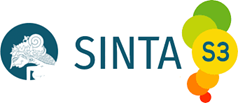The Effect of Using Cross Rope Media on Learning in Elementary Schools
DOI:
https://doi.org/10.33394/mpm.v13i1.16144Keywords:
string crossing media, learning outcomes, multiplication, elementary educationAbstract
This study aims to examine the effect of implementing string-crossing media on the mathematics achievement of elementary school students, specifically focusing on multiplication. The research was motivated by the low performance of students in understanding multiplication concepts, which is often linked to the conventional lecture-based teaching approach and the limited use of concrete instructional tools. Employing a quantitative research method with a posttest-only control group design, the study involved 36 third-grade students from SDN Batobella 1, randomly assigned into experimental and control groups. The experimental group received lessons supported by string-crossing media, while the control group was taught using conventional methods. Data were gathered through a validated achievement test. After confirming the assumptions of normality and homogeneity, data analysis was conducted using an independent samples t-test. The results demonstrated a statistically significant difference in mean scores between the experimental group (M = 81.11) and the control group (M = 70.00), with p < 0.05. These outcomes suggest that incorporating string-crossing media substantially improves students’ learning results in mathematics. The media effectively transforms abstract multiplication concepts into concrete, visual, and interactive experiences, which particularly support students with visual and kinesthetic learning preferences. Therefore, it is recommended as a viable instructional alternative for contextual learning, especially in areas with limited access to digital educational technologies.
Downloads
Additional Files
Published
How to Cite
Issue
Section
Citation Check
License
Authors who publish with this journal agree to the following terms:
- Authors retain copyright and grant the journal right of first publication with the work simultaneously licensed under a Creative Commons Attribution License that allows others to share the work with an acknowledgement of the work's authorship and initial publication in this journal.
- Authors are able to enter into separate, additional contractual arrangements for the non-exclusive distribution of the journal's published version of the work (e.g., post it to an institutional repository or publish it in a book), with an acknowledgement of its initial publication in this journal.
- Authors are permitted and encouraged to post their work online (e.g., in institutional repositories or on their website) prior to and during the submission process, as it can lead to productive exchanges, as well as earlier and greater citation of published work (See The Effect of Open Access).
Â













